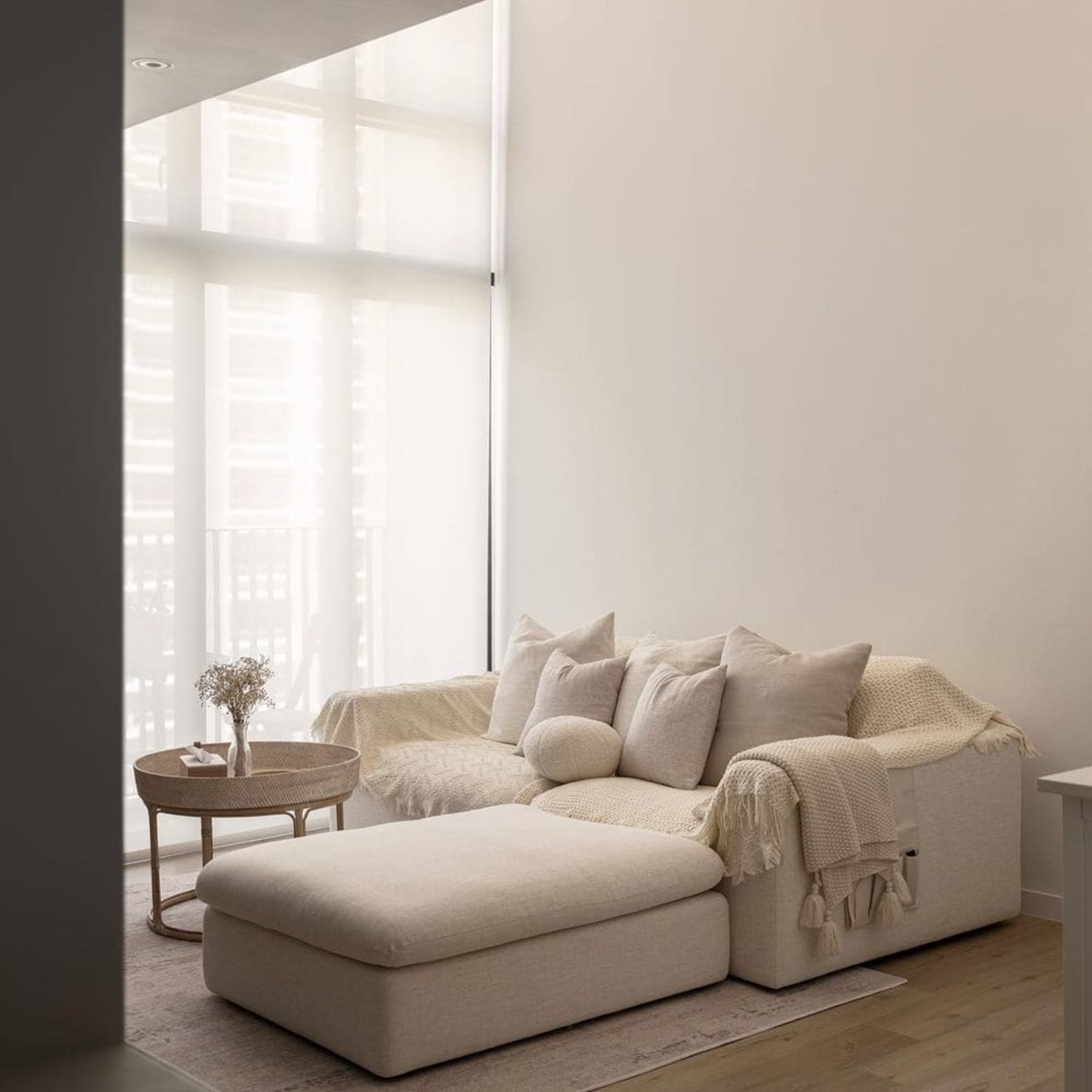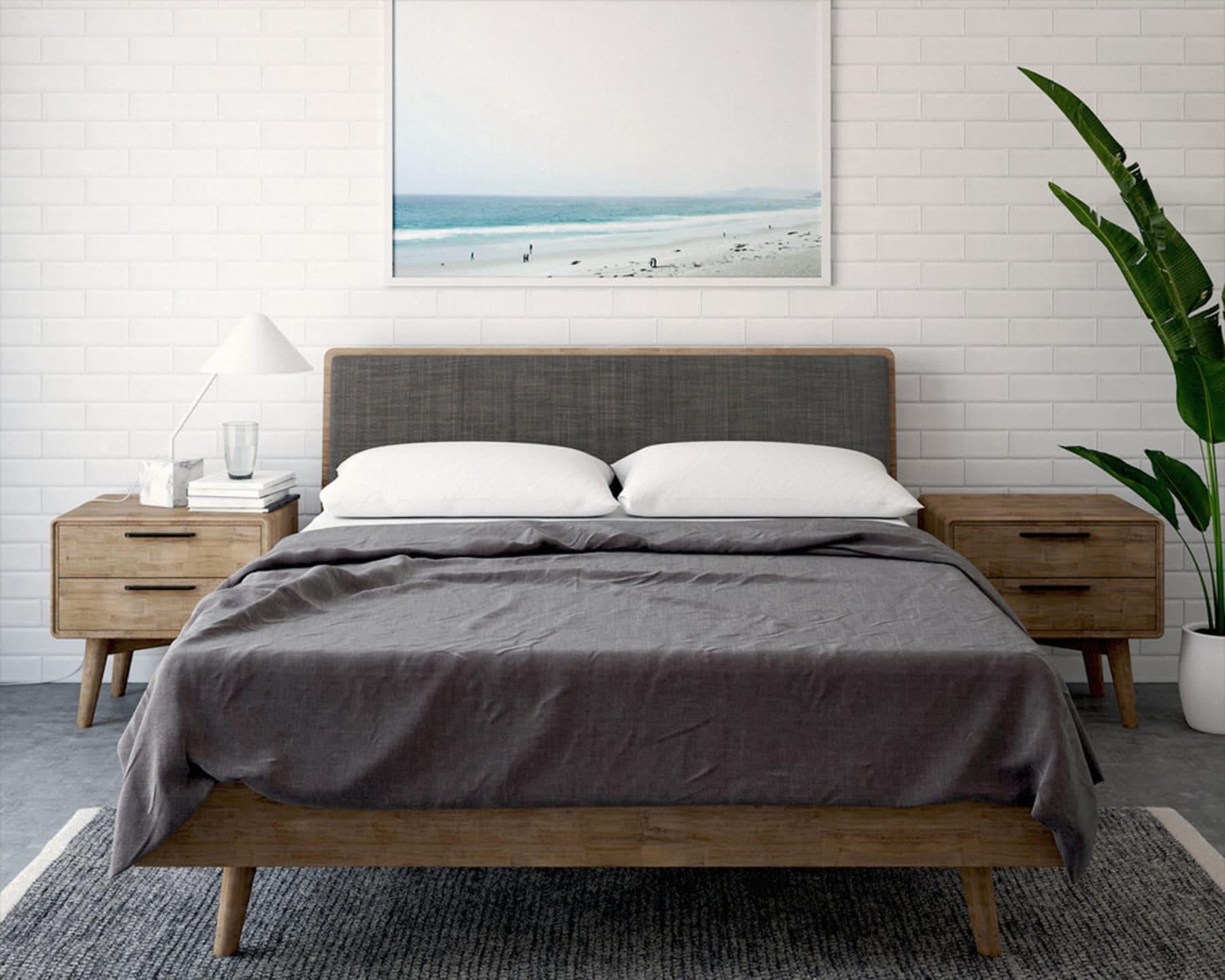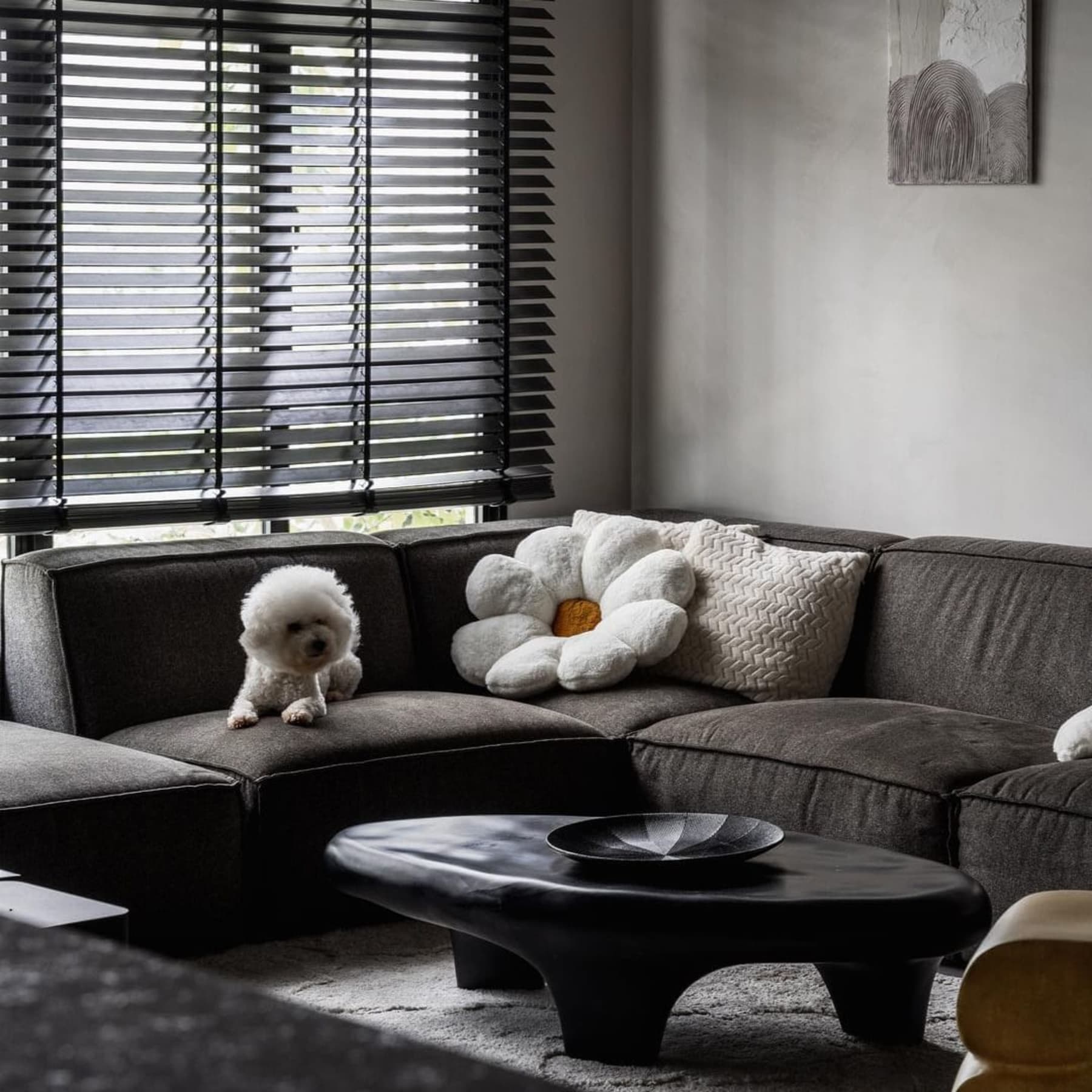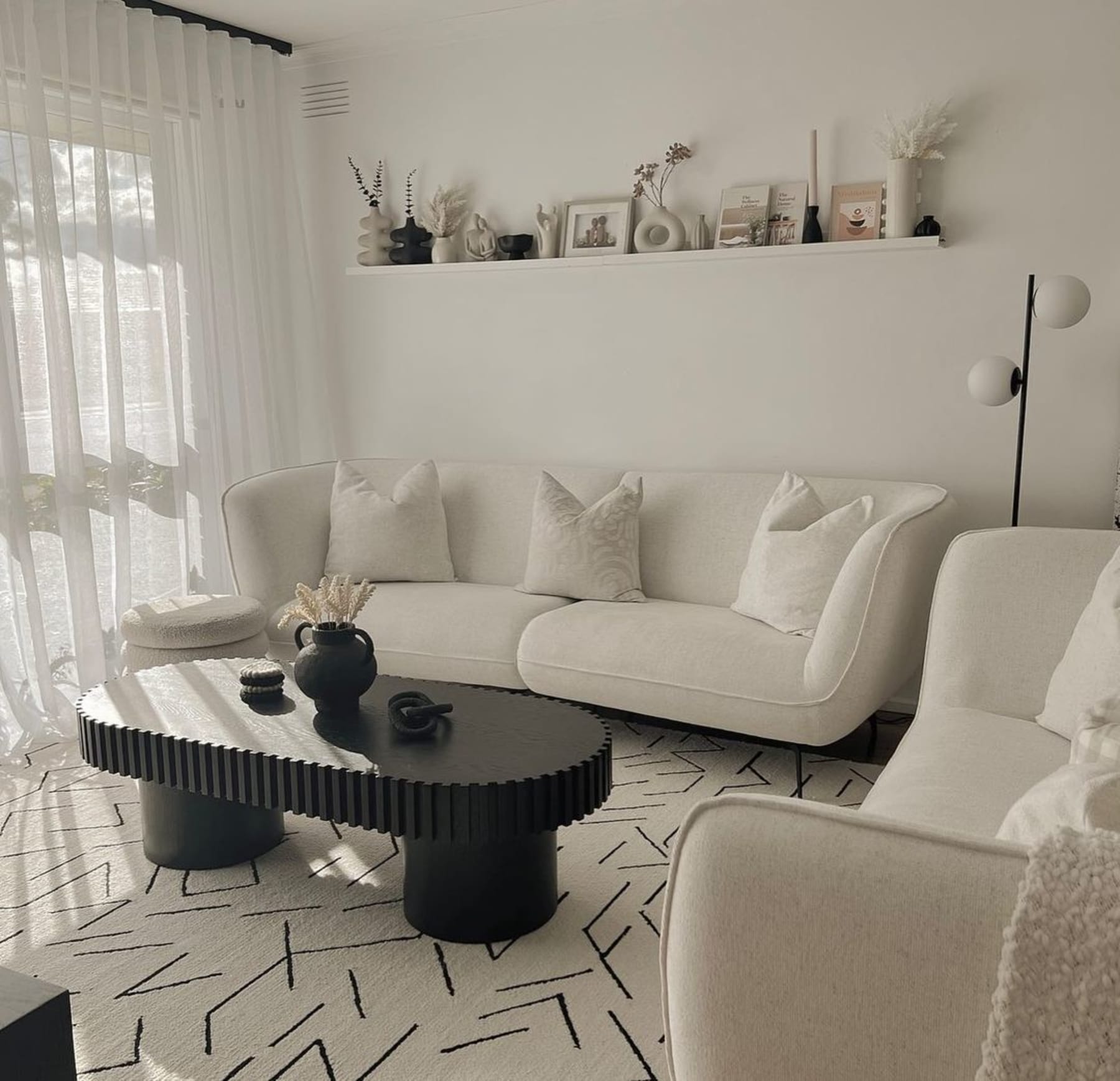
How to Style Positive and Negative Space in Your Home
When it comes to designing your home, positive and negative spaces play distinct roles, each contributing to the overall harmony of the space.
Embracing negative space is not about leaving areas vacant, and using positive space is not just filling a room with furniture. Strategically using both negative and positive spaces can transform your living space into an elegant and visually captivating haven.
In this article, we explore the nuances of styling positive and negative spaces in interior design, and uncover how you can make these spaces feel intentional in your home.
What is negative space?
Negative space, often referred to as "white space," is the unoccupied area between and around objects. It acts as the breath of design - providing a visual breather and allowing your eyes to rest which prevents the room from looking too cluttered.
Think of it as a blank canvas that, when used thoughtfully, enhances the overall impact of your room.
Negative spaces should direct attention to the positive elements in the room. It acts as a guide, leading the eye to the focal points and allowing them to take centre stage. Whether it's a piece of art, a unique piece of furniture, or an architectural feature, negative space frames and accentuates these objects.
What is positive space?
Positive space is the direct opposite of negative space - it refers to the space that is occupied or filled with tangible elements such as furniture, decor, and architectural features. It serves as the heartbeat of interior design and your home.
The positive space is the canvas on which you express your unique style and personality. Furniture choices, colour schemes, and decorative items in this space are instrumental in conveying the overall design theme and reflecting your individual taste.
Balancing positive and negative space is the key to achieving a harmonious and impactful interior design.
7 tips on styling negative and positive spaces
Thoughtful furniture arrangement
Strike a balance between filled and empty areas in your home. Arrange furniture strategically to create functional positive spaces, such as seating areas, dining zones, and workspaces.
Having dedicated zones helps you to create clear pathways between each zone that facilitate easy movement through the room.

@studioelar ensures ample negative space in the living room. Pictured: The Dawson 3-Seater Sofa.
Also, ensure there's enough unoccupied floor space within each zone to create a sense of openness and ease of movement. For example, in the living room, position a sofa and coffee table to define the positive space, leaving sufficient floor space around for a sense of openness.

Plenty of space is left in the living room in @darrynthebuilder’s home. Pictured: The Adams Chaise Sectional Sofa with Ottoman and Peri Coffee Table.
If you have large furniture, like oversized sofas or extendable dining tables, establish a visual hierarchy by placing larger or more significant furniture pieces as focal points. Surround these focal points with negative space to accentuate their importance and create a visually appealing composition.

@aestheteinteriordesign keeps the space around the Dawson 3 Seater Sofa with Ottoman clean and clutter-free.
Use coordinated furniture pieces
Furniture sets like living room sets or bedroom sets can be a valuable asset when styling both positive and negative spaces. They offer a cohesive and coordinated look, ensuring that all elements within the positive space work together seamlessly. The uniformity creates a clean and organised negative space, maintaining a sense of unity.

Having furniture sets like this Seb Bedroom Set can create a cohesive look.
Additionally, with furniture sets, the arrangement of furniture becomes simplified as the pieces are designed to complement each other. The simplicity of arrangement contributes to negative space, allowing for open areas and preventing overcrowding.
Recommended read: A Guide to Selecting the Perfect Bedroom Furniture Set
Have one statement piece
In the realm of negative and positive spaces, the mantra "less is more" takes centre stage. Having a single statement piece is often enough to add visual interest and complexity to the space.
For instance, choose a bold and unique sofa as the statement piece within the positive space. Arrange other furniture and decor items to support and complement the design of the statement sofa.
Leave areas around the statement sofa clear to prevent overcrowding and ensure it remains the visual focal point. Use neutral-coloured walls as negative space, allowing the statement sofa to pop against a calm backdrop.

The Marlow Performance Bouclé L-Shape Sectional Sofa acts as a focal point in this large living room.
Harmonise your colour palette
A cohesive colour scheme contributes significantly when styling your space. Use a single colour palette for furniture, walls, and decor items within the positive space to create a unified look.
Opt for neutral tones or subdued colours in negative spaces to enhance the visual impact of the positive elements. White walls, for instance, can act as a backdrop that allows furniture and artwork to stand out.

@martinn.met creates a moody interior aesthetic with the Jonathan Chaise Sectional Sofa in Dark Granite.
Don’t be afraid to experiment with accent colours in the positive space, while keeping negative spaces more neutral. This approach creates a contrast that draws attention to key elements in the room.
Let lighting do the magic
Use lighting fixtures within positive space, such as pendant lights or chandeliers, to create visual interest. Leverage negative space by ensuring there's ample ambient lighting to illuminate the entire room.
For example, a striking chandelier over the dining table becomes a positive space focal point, while well-distributed recessed lighting contributes to negative space.

@livspacesg illuminates the Lily Dining Table with a six-bulb pendant light and ample natural sunlight.
Aside from lighting, remember to let plenty of natural light into your home. The positive space is bathed in natural light, emphasising its design elements; and the negative space benefits from the openness and brightness, creating a seamless transition between filled and empty areas.
Embrace asymmetry
Asymmetry can be a highly effective and dynamic strategy when styling both positive and negative spaces in interior design. It introduces a sense of spontaneity and visual interest that deviates from traditional symmetrical arrangements.
Purposefully introduce elements of asymmetry within positive space, such as placing larger furniture on one side and smaller pieces on the other. Let this intentional imbalance spill into negative space, allowing for open areas that don't strictly adhere to symmetrical arrangements.
You can also use furniture and decor items with varied heights and shapes within positive space to create visual interest. This extends into negative space, preventing it from feeling too uniform.

The Odette Performance Bouclé Sofa features a unique asymmetrical backrest. Picture credits: @buildingbarossa
Use patterns
Patterns add visual interest and complexity to positive spaces, making them more dynamic and engaging. The use of patterns helps maintain a balance between filled and empty areas, preventing the room from feeling too busy.
This intentional use of patterns contributes to a balanced design, allowing negative spaces to serve as calm, uncluttered backdrops that complement and support the overall aesthetic.
For example, pair a solid-coloured sofa with a large piece of artwork or geometric rug in the living room and leave plenty of space around. The negative space benefits from the simplicity and open areas, ensuring a balanced and well-composed living room.

@stylemyhome creates contrast with the Lorenzo Wool Area Rug against solid-coloured furniture.
Mastering the interplay between positive and negative space is the essence of crafting a harmonious and visually stunning home. Whether you're arranging furniture, selecting decor, or contemplating a colour palette, the key lies in finding the delicate balance between the tangible and the unspoken.
So, embark on your design journey with confidence, using positive and negative space as your artistic tools to create a living space that resonates with your personality and style.